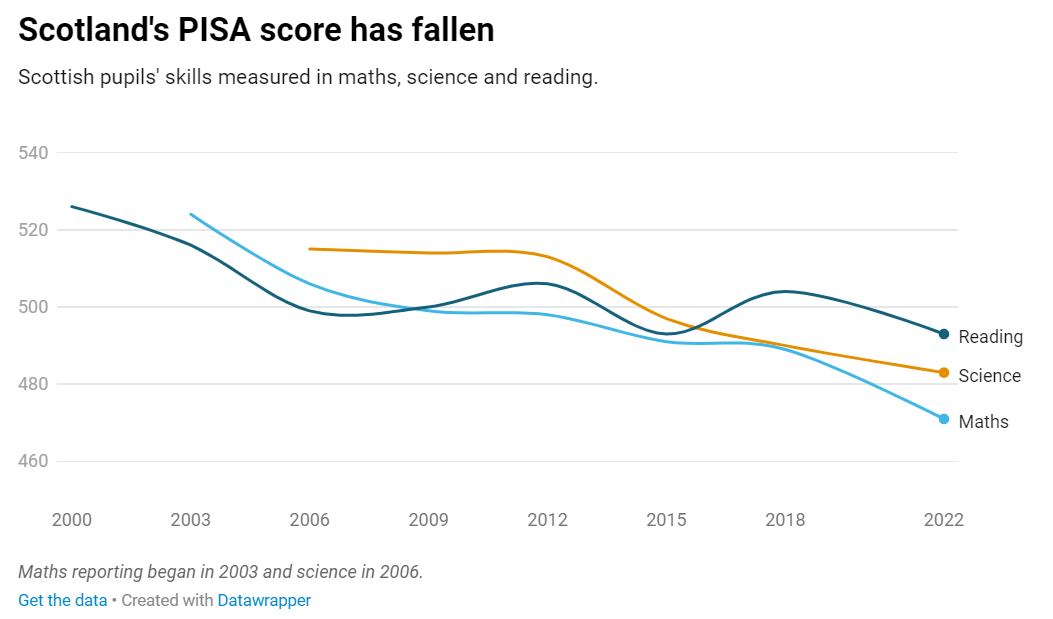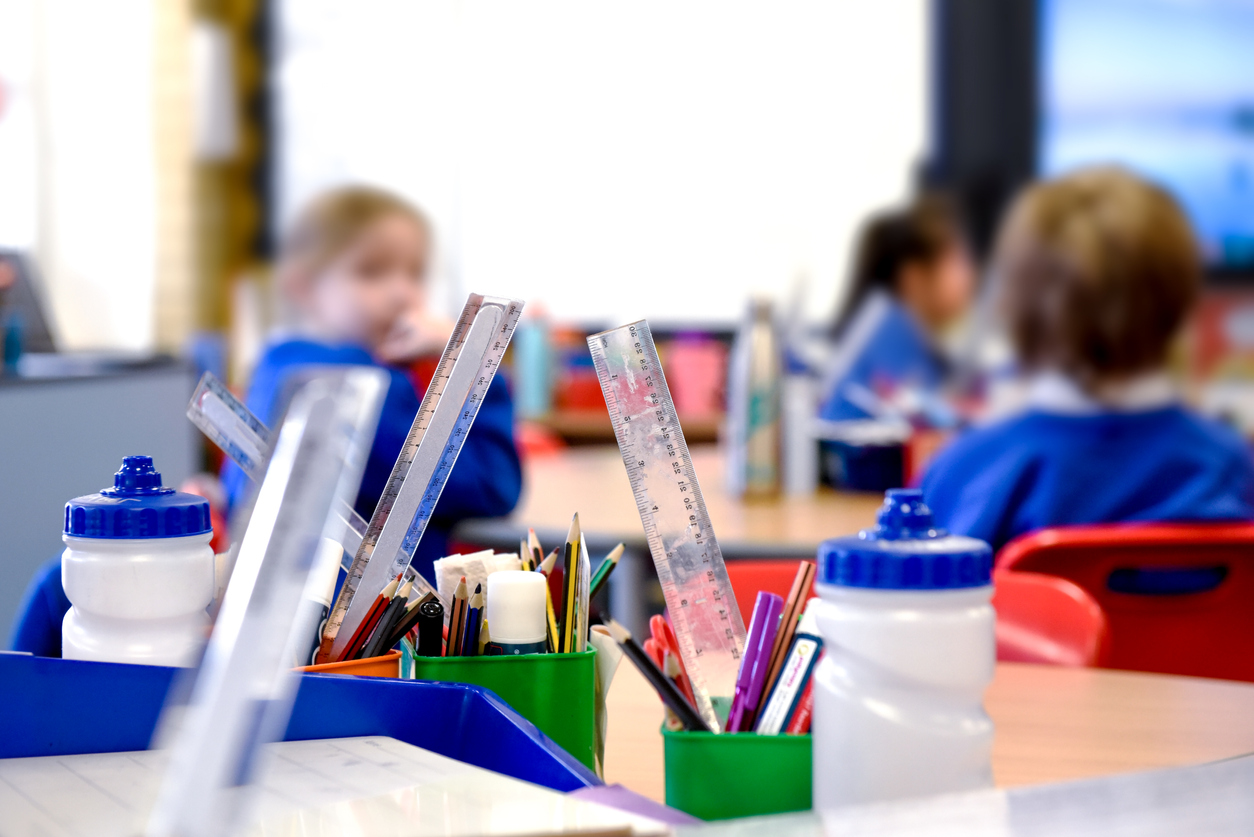Two sets of statistics looking at Scotland’s education system have been released in recent weeks.
The most up-to-date Programme for International Student Assessment (PISA) data was published by the Organisation for Economic Co-operation and Development (OECD) in early December 2023, and was cited as evidence of declining educational standards in Scotland.
Then on December 12, the Scottish Government’s Achievement of Curriculum for Excellence levels (ACEL) report was released, with ministers claiming it showed record highs in pupil attainment.
So what’s happening with Scottish education? Ferret Fact Service explains.

What did the PISA statistics show?
PISA is an international survey done by the OECD, which assesses the skills of young people aged 15 years old in maths, reading and science.
It looks at the performance of the 38 OECD member countries, and the latest survey involved 690,000 pupils across the OECD taking part between October and December 2022.
Since the last time PISA was released in 2018, Scotland’s overall performance has decreased in maths and reading, and stayed similar in science.
In maths, Scotland’s score was similar to the OECD average, but lower than in all PISA surveys since they were first established in 2003. Scots pupils did better than the OECD average in reading, while in science the average score was similar to other countries, but worse than previous surveys between 2006 and 2015.
Scotland’s score in maths and science was lower than the UK average, while in reading Scottish pupils performed similarly to the UK.

How does Scotland compare to OECD countries?
Scotland’s results in maths are similar to France, Germany, Italy, Northern Ireland and Wales. However, achievement was higher in England, Ireland, Denmark, Finland and Sweden, among others.
Pupils fared much better in reading, with only seven countries performing significantly better - Canada, Estonia, Ireland, Japan, Korea, New Zealand, and the US.
Seventeen OECD countries performed significantly better than Scotland in science, including England and Ireland. Only nine countries had notably poorer results.
What did the ACEL data show?
The Achievement of Curriculum for Excellence (CfE) Levels (ACEL) statistics look at how well pupils in Scotland are doing in reading, writing, listening & talking, and numeracy.
It’s measured at Primary one, four and seven, and at Secondary three.
This is a commonly cited statistic as it measures the attainment gap between children from the most and least deprived areas of Scotland.
It covers a slightly earlier period, reflecting achievement up to the end of the school year in June 2022.
The ACEL statistics show a mixed picture on pupils’ attainment over the last five years.
For P1 and P4, the percentage of pupils attaining the required levels in reading, writing, listening & talking and numeracy are fairly similar to 2016-17. The latest statistics for 2021-22 showed an increase in attainment compared to 2020-21, when Covid-19 restrictions impacted class time.
Pupils at P7 age have shown increases in attainment since 2016 across all measurements.
S3 pupils are measured at two levels of attainment. The percentage of pupils gaining at least a level three qualification in the CfE has reduced since 2016-17 across all measurements aside from numeracy, however the percentage attaining level four or above has increased across the board.
This means that the percentage of students who are achieving the higher level has increased, but so has the proportion not achieving the lower level qualification.
What about the attainment gap?
The Scottish Government’s progress on closing the gap between the richest and poorest students’ attainment has been criticised in recent years.
For Primary 1 pupils, the gap is higher than it was in 2016-17 across all categories, although there have been reductions since the previous year, which was affected by the Covid-19 pandemic.
In Primary 4, the attainment gap is lower than 2016-17 in reading, writing and literacy, but higher in listening & talking, and numeracy.
The gap has reduced across the board for Primary 7 pupils since 2016-17, a consistent reduction aside from a year of Covid-19 interruption.
For S3, the gap widened in all categories over the five years for level three, and there was a mixed picture in level four.
Ferret Fact Service (FFS) is a non-partisan fact checker, and signatory to the International Fact-Checking Network fact-checkers’ code of principles.
All the sources used in our checks are publicly available and the FFS fact-checking methodology can be viewed here.
Want to suggest a fact check?
Email us at factcheck@theferret.scot or join our Facebook group.
Photo credit: iStock/tagphoto















This is good factual reporting but have you fact checked the reports of England doctoring their OCEL results to appear better than they were, another Ferret fact that needs your investigation.
Thanks Ferret another interesting report.
Your article fails to mention that the Pisa results are independently produced, based on objective testing data, whereas the ACEL results are based on subjective assessments by teachers of how well their pupils are performing & who therefore have a vested interest in the results. You cannot compare these 2 test results without analysing the quality of the underlying data. I’ve recently joined the Ferret as a subscriber and am starting to worry about the quality of its journalism.